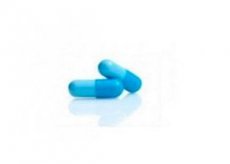Medical expert of the article
New publications
Preparations
Sodium aminosalicylate
Last reviewed: 03.07.2025

All iLive content is medically reviewed or fact checked to ensure as much factual accuracy as possible.
We have strict sourcing guidelines and only link to reputable media sites, academic research institutions and, whenever possible, medically peer reviewed studies. Note that the numbers in parentheses ([1], [2], etc.) are clickable links to these studies.
If you feel that any of our content is inaccurate, out-of-date, or otherwise questionable, please select it and press Ctrl + Enter.

Pharmacodynamics
The drug has bacteriostatic properties, affecting only the Mycobacterium tuberculosis bacterium. It should be taken into account that, compared to other anti-tuberculosis drugs, this drug has a less pronounced effect. If it is used as a monotherapeutic agent, resistance to aminosalicylic acid develops quite quickly.
Pharmacokinetics
After use, the drug is quickly absorbed, entering the blood serum and body tissues.
Metabolism occurs mainly in the liver, beginning 0.5-1 hour after taking the drug. The process of acetylation of the substance with its subsequent connection with glycine occurs inside the liver.
About 90-100% of the consumed dose of the drug is excreted in urine per day.
Dosing and administration
The medicine should be taken 0.5-1 hour after eating, washing it down with mineral water or milk.
For children weighing between 10-40 kg, the dose is 200 mg/kg per day. This portion should be divided into 3-4 doses.
For children weighing more than 40 kg, as well as adults, the dosage is 5 g of the medicine taken twice a day.
If the patient has poor tolerance to the drug, the dosage must be reduced.
The duration of the course depends on how the disease progresses and its severity. Usually it lasts at least 3-5 months. If necessary, it is allowed to extend the treatment.
Use Aminosalicylate sodium during pregnancy
There is information that when taking aminosalicylates in the 1st trimester, the fetus may develop congenital anomalies. Therefore, the use of the drug during pregnancy is prohibited.
Small amounts of aminosalicylic acid are excreted in breast milk, which requires that breastfeeding be discontinued during therapy.
Side effects Aminosalicylate sodium
Taking the medication can cause some side effects:
- sometimes: vomiting with diarrhea and nausea, as well as hypokalemia;
- rarely: skin lesions, arthralgia, feverish state, infectious mononucleosis-like syndrome, encephalitis with lymphadenopathy and jaundice. In addition, hepatosplenomegaly, renal failure, leukopenia and thrombocytopenia, as well as agranulocytosis, hemolytic anemia (in people with a deficiency of the element G6PD) and eosinophilia;
- isolated: psychoses are observed;
- in case of prolonged use of large doses of drugs: goiter or hypothyroidism develops.
Overdose
Manifestations of intoxication: vomiting with nausea, as well as diarrhea. Development of psychosis or increased severity of side effects is possible.
Based on the severity of overdose symptoms and their nature, it is necessary to either temporarily or permanently stop taking the drug. To eliminate the disorders, it will be necessary to use calcium chloride, antihistamines, and vitamin C. If the signs of allergy continue to appear for a long time, corticosteroids should be used.
Interactions with other drugs
Aminosalicylic acid increases the half-life of isoniazid.
The adverse effects of salicylates and aminosalicylates are additive.
Probenecid can potentiate the toxic properties of aminosalicylate – it disrupts the process of its excretion through the kidneys and increases its plasma levels.
Shelf life
Sodium aminosalicylate can be used for a period of 2 years from the date of release of the drug.
 [ 37 ]
[ 37 ]
Attention!
To simplify the perception of information, this instruction for use of the drug "Sodium aminosalicylate" translated and presented in a special form on the basis of the official instructions for medical use of the drug. Before use read the annotation that came directly to medicines.
Description provided for informational purposes and is not a guide to self-healing. The need for this drug, the purpose of the treatment regimen, methods and dose of the drug is determined solely by the attending physician. Self-medication is dangerous for your health.

